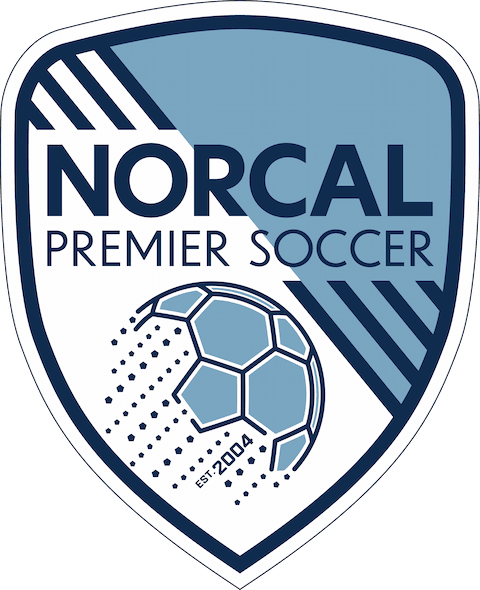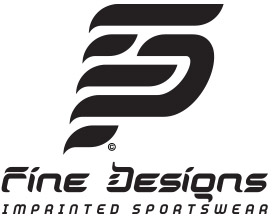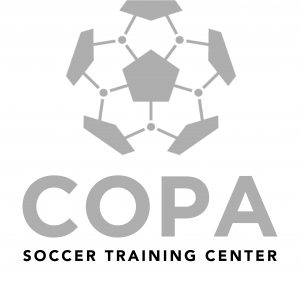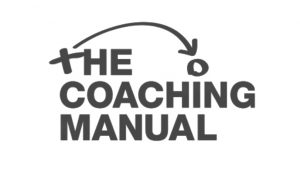NorCal Coaching Education Trip: Vitesse Arnhem

ARNHEM, The Netherlands — Tucked away in a sleepy corner near the German border in Holland lies the small city of Arnhem, best known for its strategic importance during World War II.
But if local club Vitesse has anything to say about it, the town will also be known for its football club, which hopes to turn into a heavy hitter on the Dutch scene in the very near future after the club won its first-ever major trophy in its 127 year history just three years ago.
And should Vitesse attain that success, it will have to come from the youth academy, which NorCal Premier Soccer’s Directors of Coaching had the opportunity to observe during a four-day stay this past week.
During the visit, the roughly 20 in attendance were treated to a series of lectures as well as observations of multiple youth trainings and games and a first team training followed by a first team match against former Dutch champions FC Twente.
The extended stay began with a presentation from Vitesse youth coach Bart van Rooijen, who gave those in attendance an overall overview of how the game works in his part of the woods.
According to van Rooijen, roughly 20 amateur clubs are within 50 kilometers of Arnhem and therefore lie in the club’s territory, with Vitesse hoping to have the best relationship possible with all of them.
What results is something of a symbiosis as all the amateur clubs work in conjunction to support Vitesse, while Vitesse does as much as it can to help educate said clubs.
“It’s our job as a professional club to help the amateur clubs,” van Rooijen said. “We want to improve their level so that in five or six years we get the best players possible.”

Since they don’t believe in bringing players to the club before the U10 age group, Vitesse instead looks to provide as much education to these clubs as possible and in turn subscribes to the philosophy that it gives them more time to discover who the best players in the region are.
That process takes the shape of a slow burn as amateur coaches are constantly invited to the Vitesse facility to improve their craft and once a player is recommended from an amateur club to Vitesse, he is given a minimum of 10 training sessions to prove his worth.
Should a player make the team, he is given at least two years in the program regardless of performance.
“If we send a player away after just one year, it’s our fault,” van Rooijen said.
From there, the coaches were treated to a presentation from Aloys Wijnker, the youth academy director who used to run U.S. Soccer’s Development Academy.
Wijnker started his presentation with a simple question: what kind of club do you want to be?
He then asked each participant to close their eyes and imagine their ideal club and then ask themselves how they could possibly reach that goal.
Using LA Galaxy and LAFC as an example, Wijnker showed how two teams in the same market could have such different goals and ideals while existing in the same stratosphere.
“What’s the difference between Google and Apple?” he asked. “ They both make a lot of money, but why are they different? Why do you buy one product from one and not the other?”
Just looking at the names of the clubs can provide a huge insight — the Galaxy want to be the top dogs in the world while LAFC are specifically concerned with cornering the Los Angeles market.
However, each have a clear aim and philosophy.

So, according to Wijnker, once you have a philosophy, once you can envision what you want to see on a Saturday, it still takes time to implement said philosophy.
“There isn’t a lot of history of football in the U.S.,” he said. “But that can be a positive because you can make a lot of differences by deciding what club you want to be.”
For those in attendance, those simple lessons on club development went a long way.
“Vitesse was great in that they had a very good and clear development of what their vision for player development is going to be, but they’re never afraid to make necessary changes to keep improving themselves and improving the level of the game in Holland,” said Menlo College Head Coach Zlatan Sahmanovic.
“In terms of my own playing vision and my own understanding of how the game should be played, Vitesse really opened my mind up to asking the right questions and checking all the right boxes in that vision,” he added. “I’m at the college level, so for me it’s not just the actual football part of it, but about the character development piece. I have different visions and goals than most club directors do just because the student-athlete experience is so much more than that. Ultimately, my goal is to prepare them to be good people after they graduate from my program and how to be functioning members of society within the community.”
In addition to the lectures, the NorCal coaches were treated to a series of youth trainings and matches, with those in attendance taking in a pair of U11 games as well as U16 and U19 matches.
For some, just how the players carried themselves on the pitch showed how much the United States has to grow as a soccer nation.
“From the youth player standpoint, the composure that the players held in every aspect was amazing,” said Nevada United Director of Coaching Marco Merlo. “Even in training when they make a mistake or a good play, they don’t react, they’re not overreacting emotionally in a positive or negative manner. In the games, you could see how that directly reflects the way they play.”
According to Merlo, this attitude is possible to develop in the United States, but only if a deliberate focus is put on it.
“You have to start in pieces, the first piece being making sure parents understand that their kids aren’t going to develop in the way they want them to unless they put them in the right environment and that environment starts at home and is then preached by the coaching staff in the club and then translated onto the field,” he said. “When you go to an away game and the parents on the other sideline aren’t reacting in the way you want, then you’re not reacting back. We just need to get an understanding to where parents can say, ‘I want the best environment for my kid to grow up in’ and that involves letting them make their own decisions on the field without him seeing my reaction from an emotional or physical standpoint.”
NorCal Coaching Education Trip: Vitesse Arnhem

ARNHEM, The Netherlands — Tucked away in a sleepy corner near the German border in Holland lies the small city of Arnhem, best known for its strategic importance during World War II.
But if local club Vitesse has anything to say about it, the town will also be known for its football club, which hopes to turn into a heavy hitter on the Dutch scene in the very near future after the club won its first-ever major trophy in its 127 year history just three years ago.
And should Vitesse attain that success, it will have to come from the youth academy, which NorCal Premier Soccer’s Directors of Coaching had the opportunity to observe during a four-day stay this past week.
During the visit, the roughly 20 in attendance were treated to a series of lectures as well as observations of multiple youth trainings and games and a first team training followed by a first team match against former Dutch champions FC Twente.
The extended stay began with a presentation from Vitesse youth coach Bart van Rooijen, who gave those in attendance an overall overview of how the game works in his part of the woods.
According to van Rooijen, roughly 20 amateur clubs are within 50 kilometers of Arnhem and therefore lie in the club’s territory, with Vitesse hoping to have the best relationship possible with all of them.
What results is something of a symbiosis as all the amateur clubs work in conjunction to support Vitesse, while Vitesse does as much as it can to help educate said clubs.
“It’s our job as a professional club to help the amateur clubs,” van Rooijen said. “We want to improve their level so that in five or six years we get the best players possible.”

Since they don’t believe in bringing players to the club before the U10 age group, Vitesse instead looks to provide as much education to these clubs as possible and in turn subscribes to the philosophy that it gives them more time to discover who the best players in the region are.
That process takes the shape of a slow burn as amateur coaches are constantly invited to the Vitesse facility to improve their craft and once a player is recommended from an amateur club to Vitesse, he is given a minimum of 10 training sessions to prove his worth.
Should a player make the team, he is given at least two years in the program regardless of performance.
“If we send a player away after just one year, it’s our fault,” van Rooijen said.
From there, the coaches were treated to a presentation from Aloys Wijnker, the youth academy director who used to run U.S. Soccer’s Development Academy.
Wijnker started his presentation with a simple question: what kind of club do you want to be?
He then asked each participant to close their eyes and imagine their ideal club and then ask themselves how they could possibly reach that goal.
Using LA Galaxy and LAFC as an example, Wijnker showed how two teams in the same market could have such different goals and ideals while existing in the same stratosphere.
“What’s the difference between Google and Apple?” he asked. “ They both make a lot of money, but why are they different? Why do you buy one product from one and not the other?”
Just looking at the names of the clubs can provide a huge insight — the Galaxy want to be the top dogs in the world while LAFC are specifically concerned with cornering the Los Angeles market.
However, each have a clear aim and philosophy.

So, according to Wijnker, once you have a philosophy, once you can envision what you want to see on a Saturday, it still takes time to implement said philosophy.
“There isn’t a lot of history of football in the U.S.,” he said. “But that can be a positive because you can make a lot of differences by deciding what club you want to be.”
For those in attendance, those simple lessons on club development went a long way.
“Vitesse was great in that they had a very good and clear development of what their vision for player development is going to be, but they’re never afraid to make necessary changes to keep improving themselves and improving the level of the game in Holland,” said Menlo College Head Coach Zlatan Sahmanovic.
“In terms of my own playing vision and my own understanding of how the game should be played, Vitesse really opened my mind up to asking the right questions and checking all the right boxes in that vision,” he added. “I’m at the college level, so for me it’s not just the actual football part of it, but about the character development piece. I have different visions and goals than most club directors do just because the student-athlete experience is so much more than that. Ultimately, my goal is to prepare them to be good people after they graduate from my program and how to be functioning members of society within the community.”
In addition to the lectures, the NorCal coaches were treated to a series of youth trainings and matches, with those in attendance taking in a pair of U11 games as well as U16 and U19 matches.
For some, just how the players carried themselves on the pitch showed how much the United States has to grow as a soccer nation.
“From the youth player standpoint, the composure that the players held in every aspect was amazing,” said Nevada United Director of Coaching Marco Merlo. “Even in training when they make a mistake or a good play, they don’t react, they’re not overreacting emotionally in a positive or negative manner. In the games, you could see how that directly reflects the way they play.”
According to Merlo, this attitude is possible to develop in the United States, but only if a deliberate focus is put on it.
“You have to start in pieces, the first piece being making sure parents understand that their kids aren’t going to develop in the way they want them to unless they put them in the right environment and that environment starts at home and is then preached by the coaching staff in the club and then translated onto the field,” he said. “When you go to an away game and the parents on the other sideline aren’t reacting in the way you want, then you’re not reacting back. We just need to get an understanding to where parents can say, ‘I want the best environment for my kid to grow up in’ and that involves letting them make their own decisions on the field without him seeing my reaction from an emotional or physical standpoint.”














